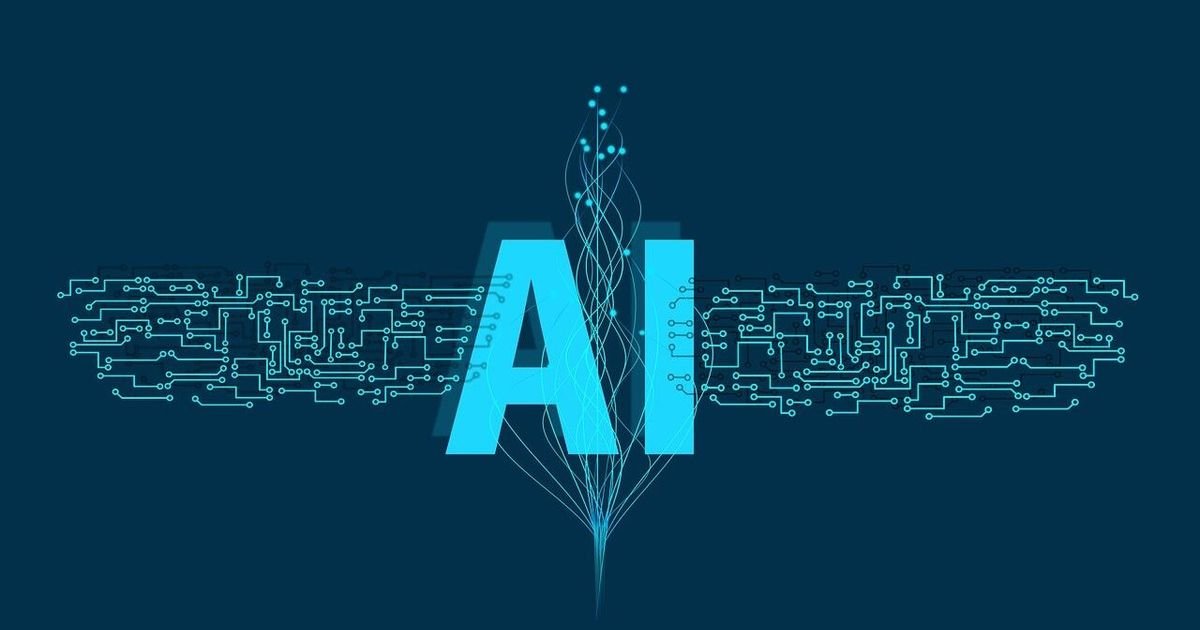Tools & Platforms
Apple’s new iPhone 17 devices don’t have an AI-powered Siri yet. It doesn’t matter.

At yet another splashy event, Apple on Tuesday introduced its latest lineup of iPhones: the iPhone 17, 17 Pro, 17 Pro Max, and a new slimmer version dubbed the iPhone Air. The “Air” branding is meant to bring to mind other lightweight — and sometimes less expensive — Apple products like the MacBook Air and iPad Air. But it also recalls a time when smartphone makers were chasing an ever-thinner phone. In the AI era, however, it’s not necessarily the device’s size that matters; it’s what the software it runs can do.
On this front, Apple has lagged its competitors.
At its iPhone 17 event, the company only referenced AI technology a few times: to rehash some updates announced in June at WWDC, like Visual Intelligence and its on-device models, and in some aspects of its camera upgrades, like the iPhone 17’s front camera, which it calls Center Stage.
The most compelling use of AI wasn’t even introduced as a phone upgrade; it was the AI-powered Live Translation feature coming to Apple’s AirPods 3.
There was no mention of Siri at all, AI-powered or otherwise.
Much has been made about how Apple’s miscalculation on AI could negatively affect its industry standing and future success. Meanwhile, Google last month rolled out its latest release of an AI-powered Android phone with its Pixel 10, as iPhone owners still await an AI Siri that’s been delayed until 2026.
Until now, Apple has only released what could be considered baseline AI features for its devices, like AI writing tools, summarization, generative AI images (which some complain are not very good), live translation, visual search, and Genmoji, among others. Yet a digital assistant that understands a wide range of questions — without deferring to ChatGPT — or one that can provide further context from your iPhone apps remains overdue.
Recently, it was reported that Apple is looking to third parties to help it catch up in the AI race. An AI-enhanced Siri could be running some other technology — like Google Gemini — under the hood.
At first glance, this delay, combined with the decision to rely on a third party — or even, possibly a sizable acquisition — seems like it could spell bad news for Apple. However, Apple’s decision to outsource some of the phone’s AI technology could actually become a selling point for consumers.
Today’s iPhone owners often swap out Apple’s technology for Google’s by opting for Gmail, Google Drive and Docs, Google Maps, and Chrome over Apple’s own apps like Mail, its iWork suite, Apple Maps, and Safari, for example. When people search the web, they turn to Google’s Search app, not Apple’s built-in Spotlight search, despite its many integrations over the years to offer basic facts and answers, leveraging sources like Wikipedia. Why, then, shouldn’t they be able to use Google’s AI technology, too?
If Apple does proceed with a third-party deal to integrate AI into its devices, it may work out to be an even bigger win for iPhone owners. It would mean that high-performing AI technology would be integrated into the device more natively. It would feel more seamless, more a part of the iPhone experience itself than simply running an AI app. And Apple could get there without having to invest as heavily in the infrastructure required to compete in the AI race, which is good for the company’s (already healthy) bottom line.
Plus, given the speed with which AI technology has been evolving, this design would leave room for Apple to swap out models or expand support to include others, as AI companies edge themselves ahead of others.
The result for consumers would be the best of both worlds: the aesthetics and hardware quality (thinness and all!) of the iPhone, with Google’s technology (or Anthropic’s or OpenAI’s) powering some of the key AI components. That could also be beneficial to Apple’s overall brand.
It also means that the look-and-feel of updated iPhones themselves and their hardware advances will continue to drive sales and upgrades, allowing Apple to do what it does best: focus on build quality, camera improvements, privacy-preserving tech, intentional software design changes like Liquid Glass — and yes, super thin phones.
Apple could continue to market itself as a best-in-class hardware maker first, not an AI device maker; customers could still long for the latest iPhones, as always, without having to sacrifice the latest technology advances when they make the choice to buy a phone from Apple.
Of course, this scenario only plays out if and when Apple opts to launch a version of Siri that runs a third-party’s AI technology to enhance its own. (Or if it buys an AI company). But if Apple decides to only rely on its Apple Intelligence offerings without getting them up to speed quickly, the outcome could be much different.
Tools & Platforms
Baltimore Launches AI Computer Lab for Youth, Seniors

Last week, Baltimore Mayor Brandon Scott joined the Intel Corporation and NWN, an AI-powered technology modernization company, to inaugurate an AI Computer Resource Lab at the city’s Greenmount Recreation Center.
The partnership, which will provide Intel-based AI PCs and hands-on learning experiences for underserved youth and seniors, aims to address the widening digital divide as AI becomes essential for education and workforce skills, according to a recent news release from NWN.
“Our journey here began with a bold idea several years ago: to use AI to help modernize the city’s 911 system,” NWN’s Chief Marketing Officer Andrew Gilman said. “That project sparked a deeper commitment to this community, notably hosting the world’s first AI Athletics Day last summer and now into a meaningful collaboration with Baltimore Recreation and Parks.”
According to a news release from Intel, difficulty accessing technology is commonplace for many people in the Baltimore area. Over 27 percent of households in Greenmount East do not have Internet access, in addition to 22 percent of adults who did not attain a high school diploma or equivalent in said neighborhood, Intel said.
“This lab represents more than just access to powerful tools — it empowers students and seniors with the skills they need to thrive in a digital world,” NWN President and CEO Jim Sullivan said in a public statement.
In addition to technology, the lab also allows access to a tailored curriculum to help build AI literacy, Mayor Scott said in the release.
“It’s designed to make advanced skills and digital creativity accessible to everyone,” Gilman said in a public statement. “To the East Baltimore community, this AI lab is your space. Use it to learn, to build, and to imagine.”
Baltimore’s partnership with two leading tech companies is only the latest of many examples of municipal governments devoting public resources to building digital and AI literacy in recent years. In 2024, for example, the Amarillo Public Library in Texas launched a digital literacy initiative, which was also intended to boost broadband coverage. According to the Texas State Library and Archives Commission, as of 2022, only 60 percent of Amarillo residents had Internet connectivity at the time.
In Intel’s news release, Gilman said he was excited to see high interest in AI Athletics Day at the Greenmount Recreation Center in June 2024.
“What I love about what we did together as a partnership is that we set the groundwork for answering ‘What is AI?’ ‘How does it work?’ and ‘How can we get our kids learning and inspired by AI?’” he said in a public statement.
Tools & Platforms
U.S. Executive Order Propels American AI Exports | Torres Trade Law, PLLC

On July 23, 2025, President Trump signed an Executive Order, “Promoting the Export of the American AI Technology Stack” (AI Export EO), which represents a significant evolution in U.S. policy related to AI. For businesses operating in the AI sector and the wider emerging technology ecosystem, the move creates new export opportunities, but these opportunities come with export compliance considerations.
American AI Exports Program
The AI Export EO requires the establishment of the American AI Exports Program (the “Program”), which will be implemented by the Department of Commerce. The objective of the Program will be to support the development and deployment of “full-stack AI export packages.” These so-called “full-stack” exports encompass hardware, software, data infrastructure, AI models, and cybersecurity layers.
The AI Export EO requires coordination of relevant agencies for the “mobilization of Federal financing tools in support of priority AI export packages,” which are the export packages selected by Commerce for inclusion in the Program. Per the EO, the Trump administration also seeks to facilitate the investment in U.S. small businesses for the development of AI technologies and the manufacture of AI infrastructure, hardware, and systems.
Proposals for Inclusion in Program
Initially, Commerce will solicit public proposals from “industry-led consortia” to be included in the Program. The deadline for submission will be within 90 days after the call for proposals, and each proposal must include:
-
A “full-stack AI technology package,” inclusive of:
-
AI-optimized computer hardware (e.g., chips, servers, and accelerators), data center storage, cloud services, and networking;
-
data pipelines and labeling systems;
-
AI models and systems;
-
measures to ensure the security and cybersecurity of AI models and systems; and
-
AI applications for specific use cases (e.g., software engineering, education, healthcare, agriculture, or transportation);
-
-
A description of whether and to what extent the AI full-stack hardware is manufactured in the United States;
-
Identification of specific target countries or regions for export engagement;
-
A description of a business model explaining the entities that operate data centers and associated infrastructure; and
-
A description of requested Federal incentives and support.
Export Control Compliance Requirements
Importantly, the proposals for inclusion in the Program also require the consortia to “comply with all relevant United States export control regimes, outbound investment regulations, and end-user policies.” The AI Export EO also specifically references compliance with the Export Control Reform Act and guidance from the Department of Commerce Bureau of Industry and Security (BIS), which administers and enforces the Export Administration Regulations (EAR).
On May 13 2025, one day after announcing the recission of the Biden administration’s sweeping AI export rule, BIS published multiple guidance documents related to advanced computing integrated circuits useful for AI purposes:
-
Guidance on Application of General Prohibition 10 to People’s Republic of China Advanced-Computing Integrated Circuits: This guidance alerts U.S. industry to risks of using Chinese-origin advanced computing integrated circuits (ICs). General Prohibition 10 provides that one “may not sell, transfer, export, reexport, finance, order, buy, remove, conceal, store, use, loan, dispose of, transport, forward, or otherwise service, in whole or in part, any item subject to the EAR” with knowledge that a violation has occurred. Because many Chinese-origin advanced computing ICs, including specific Huawei Ascend chips, were likely developed or produced in violation of the EAR, the use of such chips is likely in violation of General Prohibition 10.
-
Industry Guidance to Prevent Diversion of Advanced Computing Integrated Circuits: With this guidance, BIS seeks to improve industry’s awareness of illegal diversion schemes specifically related to advanced computing ICs. Advanced computing ICs are used by China for military modernization and for training AI models. The guidance adds multiple new “transactional and behavioral red flags” to monitor and identifies numerous due diligence actions companies should take related to customers.
-
BIS Policy Statement on Controls that May Apply to Advanced Computing Integrated Circuits and Other Commodities Used to Train AI Models: Written as a “policy statement,” this document updates previous BIS advisory opinions and describes types of activities that may be subject to EAR export authorizations. Specifically, the policy statement announces that “BIS has determined that access to advanced computing integrated circuits and commodities subject to the EAR for training AI models has the potential to enable military-intelligence and weapons of mass destruction (WMD) end uses in Country Group D:5 countries (including China) or Macau.”
Companies and consortia interested in applying for inclusion in the Program must have an export compliance plan in place at both the proposal drafting and execution stages, and the compliance plan will require enhanced end-user screening and due diligence. Legal and compliance teams should proactively review their export control policies focused specifically on AI products, services, and data flows.
Tools & Platforms
Post-Labor Day reflection shows urgency, opportunity of AI :: WRAL.com

Labor Day was not just a break from
work. For me, it was a time to reflect on the values that brought my family to
this country — hard work, opportunity and community — and how we must pass
those values forward through innovation and inclusion.
Wake County stands at a crossroads.
Artificial intelligence is no longer a buzzword. It is a tool being used in
local government, healthcare, education and small business. What we do now will
shape whether this technology strengthens our communities — or leaves people
behind.
Morrisville: A model for smart innovation
Right here in Wake County, Morrisville
is showing what’s possible. Our town has been nationally recognized with the CIO 100 and IDC Smart Cities North America Awards
for smart city leadership. Earlier this year, an international delegation
visited our Town Hall to learn from CIO Rick Ralph’s team and our
approach to innovation.
We’re now deploying generative AI to
help staff search documents more efficiently. And we are planning to introduce Morris the Cricket, a generative AI
chatbot that improves customer service by answering resident questions in
real-time.
This kind of smart city innovation
should not remain isolated. We need a framework to share best practices across municipalities and scale what’s
working. Wake County is uniquely positioned to lead the nation in regional AI
implementation — and now is the time.
The AI moment is already here in
North Carolina
Across the state, AI is moving from
promise to practice:
•
NC State University is embedding AI into educational
curricula.
•
Atrium Health is using AI to improve early cancer
detection.
•
School systems are piloting AI to enhance student
safety.
And while large companies are
leading the way, only 5.1% of small businesses currently use AI.
That figure is expected to rise. But AI isn’t wiping out jobs. It’s
transforming them —and we need to prepare workers to take on new roles that
require digital fluency and AI literacy.
As former Cisco CEO John Chambers
put it: AI success will depend on
common-sense strategies and strong leadership.
Leadership matters: Meet the people moving
us forward
We’re fortunate to have leaders
right here in the Triangle who are building the infrastructure—physical,
digital, and educational—for an inclusive AI economy.
Mark Hinkle
– Founder, Peripety Labs
Mark is building bridges between AI
entrepreneurs, enterprise users, and educators. His focus on open source innovation and practical workforce development ensures
that AI adoption benefits everyone—not just those in tech hubs. His Artificially Intelligent Enterprise
newsletter and work through the All Things AI community have helped thousands of
professionals navigate the AI transition.
Tom
Snyder – Executive Director, RIoT
Tom’s work through RIoT is critical. He’s scaling the
innovation economy beyond Raleigh and Durham by accelerating startups and
advocating for rural inclusion. RIoT’s incubators and workforce training
programs are helping new businesses grow and helping workers prepare for AI,
IoT, and automation-driven jobs.
John
Holden – Smart Cities Manager, City of
Raleigh
John’s regional vision is essential.
Through efforts like the Connected
Triangle Summit (next on Oct. 14),
he’s helping municipalities work together, not in silos. Raleigh’s smart city
strategies—and Holden’s focus on university, government, and private sector
collaboration—serve as a blueprint for how AI can be scaled regionally.
🗓️
Learn more about the Connected Triangle Summit.
These leaders remind us: the path
forward isn’t top-down or bottom-up. It’s collaborative.
Training is the foundation of the AI
economy
Technology moves fast. Workforce
training needs to move faster. A few priorities:
1. Rapid Upskilling and Reskilling
Wake Tech and NC State
must continue expanding programs that meet workers where they are. That means stackable credentials, bootcamps, and micro-certifications that quickly turn skills into jobs.
2. Align Local Action with Statewide
Strategy
Governor Josh Stein’s Executive Order No. 24
created the AI Leadership Council,
backed by a new AI Accelerator
inside the Department of Information Technology. Wake County should align
closely with this council to ensure our programs directly connect to state
strategy—and our residents get first access to new jobs.
3. Cross-Sector Collaboration
Regional forums like the Connected Triangle Summit allow
employers, schools, and government to coordinate. These meetings help translate
policy into programs, and training into employment pipelines.
4. Build Ethical, Community-Centered
AI
AI adoption must be grounded in
trust. Data privacy, algorithmic fairness, and access to tools shouldn’t be
afterthoughts. Ethics needs to be built into every program, pilot, and
platform.
A personal reflection
This work is personal to me.
My daughter Sonia Rao, a
journalist at The New York Times, and
my son Rayan, studying biomedical engineering at NC State, remind me daily why
this matters. Their futures—and the futures of all North Carolinians —depend on the investments we make now.
As the child of immigrants, I know
what opportunity looks like. I’ve lived it. And I want to make sure every resident, regardless of background, has
access to the tools, training and mentors to succeed in this next era.
Looking ahead: A challenge for Wake
County and North Carolina
We don’t need to wait. We need to
act. Here’s where we begin:
•
Expand
workforce access to AI training across all ages and
experience levels—students, veterans, mid-career professionals, and public
sector workers.
•
Partner
with the Governor’s AI Council to integrate local and state
training systems.
•
Ensure
every AI pilot or program centers people. Not just efficiency, but equity, access, and upward mobility.
The future won’t be coded in silicon.
It will be built by people
Wake County’s future in AI won’t be
written in code. It will be built by our neighbors, our students, our educators
and our leaders.
Let’s make it smart. Let’s make it
inclusive. Let’s make it ours.
-

 Business2 weeks ago
Business2 weeks agoThe Guardian view on Trump and the Fed: independence is no substitute for accountability | Editorial
-
Tools & Platforms4 weeks ago
Building Trust in Military AI Starts with Opening the Black Box – War on the Rocks
-

 Ethics & Policy1 month ago
Ethics & Policy1 month agoSDAIA Supports Saudi Arabia’s Leadership in Shaping Global AI Ethics, Policy, and Research – وكالة الأنباء السعودية
-

 Events & Conferences4 months ago
Events & Conferences4 months agoJourney to 1000 models: Scaling Instagram’s recommendation system
-

 Jobs & Careers2 months ago
Jobs & Careers2 months agoMumbai-based Perplexity Alternative Has 60k+ Users Without Funding
-

 Education2 months ago
Education2 months agoVEX Robotics launches AI-powered classroom robotics system
-

 Podcasts & Talks2 months ago
Podcasts & Talks2 months agoHappy 4th of July! 🎆 Made with Veo 3 in Gemini
-

 Education2 months ago
Education2 months agoMacron says UK and France have duty to tackle illegal migration ‘with humanity, solidarity and firmness’ – UK politics live | Politics
-

 Funding & Business2 months ago
Funding & Business2 months agoKayak and Expedia race to build AI travel agents that turn social posts into itineraries
-

 Podcasts & Talks2 months ago
Podcasts & Talks2 months agoOpenAI 🤝 @teamganassi



















